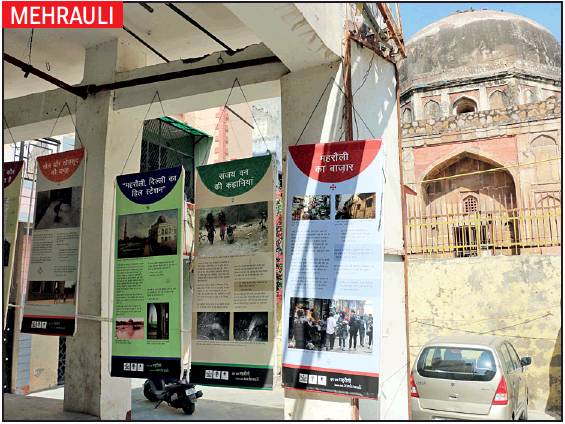Dr. B.R. Ambedkar University, Delhi
This is a collection of articles archived for the excellence of their content. |
Centre for Community Knowledge
Neighbourhood museums, 2012-19
Ritam Halder, May 17, 2019: The Times of India

From: Ritam Halder, May 17, 2019: The Times of India

From: Ritam Halder, May 17, 2019: The Times of India
Pop-up museum to tell more about your locality
New Delhi:
Centre for Community Knowledge (CCK) of Ambedkar University is planning to set up a neighbourhood pop-up museum in west Delhi’s Punjabi Bagh.
“We know very little about the people living in the city. Each year, we set up the museum in one part of the city. It is in the locality, about the locality, by the locality. This year, it will be done in west Delhi, in the Punjabi Bagh Karampura area, which was the industrial heartland of Delhi in the 60s, 70s and 80s. It’s completely changed because the industries are gone. But who is there? What do they do? Where did they come from in the first place even in the years before the industries,” Surajit Sarkar, associate professor and coordinator told TOI.
As part of the programme, exhibitions, discussions, workshops, and cultural events are organised in which locals participate and share their folklore, songs, customs, and stories are passed down from one generation to the next.
The first such neighbourhood museum came up in Shadi Khampur, a Jat majority village, in 2012, followed by two in Nizamuddin and Kashmere Gate in 2015 and then in 2017 in Mehrauli. “Not all histories are recorded, especially the common man’s history that goes largely undocumented and unarchived. The neighbourhood history museum puts words, pictures and sounds to people’s memories. Oral histories from a neighbourhood in the city show how ordinary people have contributed in creating the Delhi we know and live in today,” Sarkar said, adding that interviews with community members, audio-visual recordings, photographs and artefacts on loan from residents together build a fascinating picture of the origin and growth of the city of Delhi as seen by its citizens.
The department will partner with government agencies, NGOs, and institutions for the museum. The venue of the event can be at any place in the colony like an old house or a locality park. According to him, the centre is also exploring different themes for the upcoming events.
“We are looking at three themes — water, industry and education. How many people know that the southern part of Shahjahanabad used to be an education hub? A 17th century Anglo Arabic College still stands tall on Asaf Ali Road. We want to collect such information and make it public,” Sarkar said.